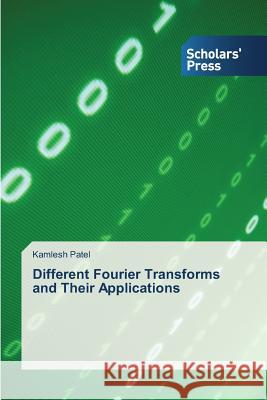Different Fourier Transforms and Their Applications » książka
Different Fourier Transforms and Their Applications
ISBN-13: 9783639668964 / Angielski / Miękka / 2014 / 84 str.
Many fine mathematical tasks on the Fourier Transform have been published till date. This book differs in that it is intended to apply Fourier Transforms to physical situations rather than with pursuing the mathematical subject as such. The primary objective is to introduce methods using Integral Transforms, rather concerning ourselves with the general theory itself. It provides the detailed logical explanation of the theoretical foundations of different Fourier transforms which will help the reader in developing strong problem solving skills. Chapter-1 covers the basic concepts of Fourier Transform along with a few basic functions and properties and derivative of Fourier Transform of some function and their applications. Chapter-2 deals with Discrete Fourier Transform and discusses the development of mathematical theories related to it. In Chapter-3, the concept of Fast Fourier Transform (FFT) is introduced. The aim of the author is to provide a self-contained material in which various Fourier transform methods are introduced, discussed and compared. Together with variety of problems, the study is developed in a logical sequence.
Many fine mathematical tasks on the Fourier Transform have been published till date. This book differs in that it is intended to apply Fourier Transforms to physical situations rather than with pursuing the mathematical subject as such. The primary objective is to introduce methods using Integral Transforms, rather concerning ourselves with the general theory itself. It provides the detailed logical explanation of the theoretical foundations of different Fourier transforms which will help the reader in developing strong problem solving skills. Chapter-1 covers the basic concepts of Fourier Transform along with a few basic functions and properties and derivative of Fourier Transform of some function and their applications. Chapter-2 deals with Discrete Fourier Transform and discusses the development of mathematical theories related to it. In Chapter-3, the concept of Fast Fourier Transform (FFT) is introduced. The aim of the author is to provide a self-contained material in which various Fourier transform methods are introduced, discussed and compared. Together with variety of problems, the study is developed in a logical sequence.











